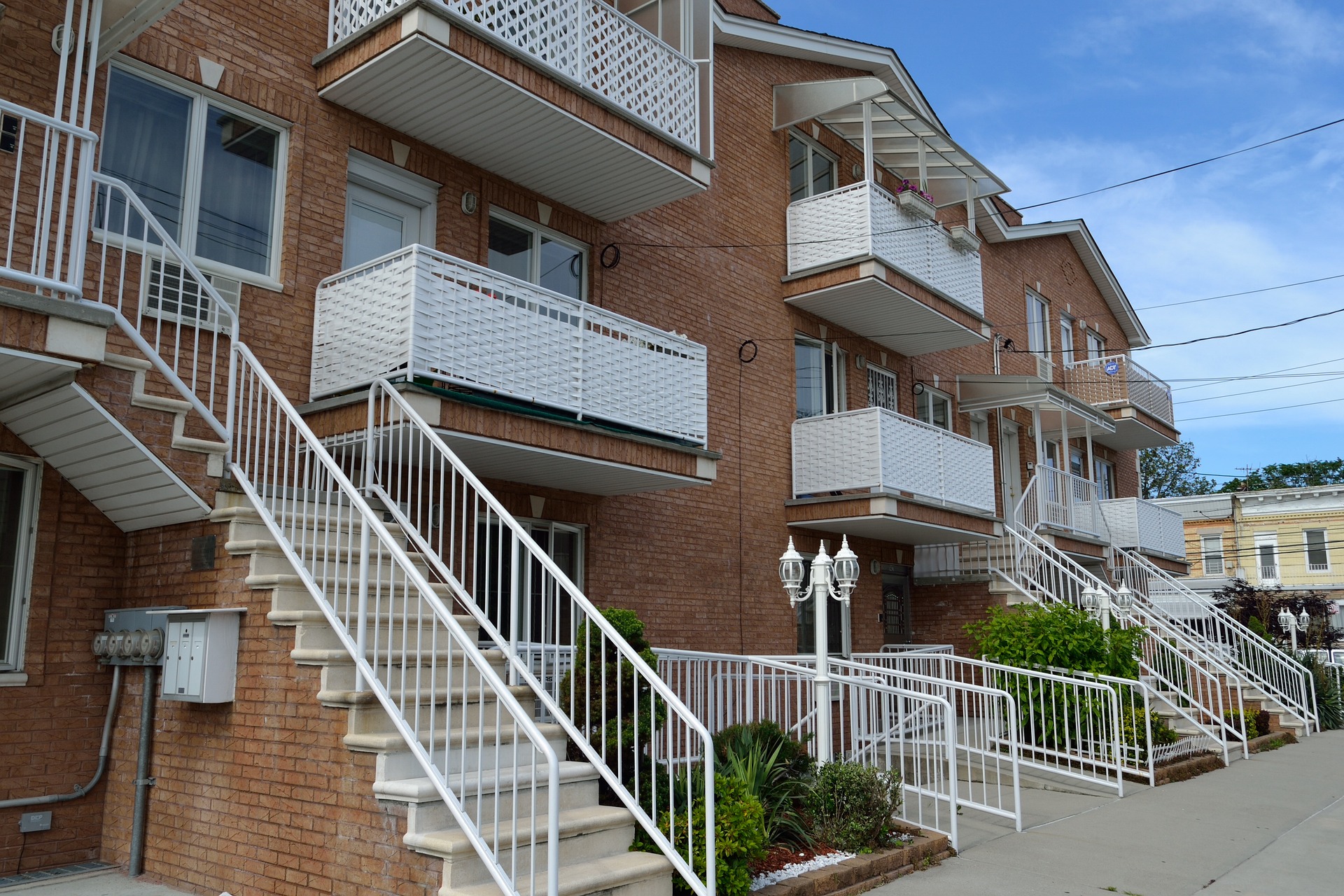Are you seeking innovative ways to capitalize on your investment in the real estate market? As more investors lose confidence in the Buy-To-Let (BTL) market, Build-to-Rent (BTR) properties are proving to be a more alluring and advantageous alternative.
With its increased potential to offer consistent rental income, BTR properties are not just about providing housing, it’s about developing community value through revitalization efforts and fostering vibrant, inclusive communities.
These are essentially properties built with the primary purpose of renting them out – a model that caters perfectly to an evolving segment of the population seeking the tranquillity of a home meshed seamlessly with the convenience of renting.
Whether you are a seasoned landlord, property manager, or new to the game, our objective is to help you understand the ins and outs of this lucrative model and how you can leverage it for long-term success.
What is Build-to-Rent Investment?
The term ‘Build-to-Rent’ (BTR) refers to a property investment model where homes are constructed for the specific purpose of being rented out. This model creates entire communities of single-family rentals that are all part of a professionally managed and amenity-rich community.
The BTR model is a recent development in the real estate industry. It’s an innovative response to the increasing demand for rental properties, especially among millennials and young professionals. These individuals, often grappling with student debt and inflation, may not have the financial means to purchase a home. As a result, they opt for BTR homes that offer a homeownership-like experience without the burden of a mortgage.
The Benefits of Investing in Build to Rent Communities
Investing in Build-to-Rent communities comes with a plethora of advantages that can significantly contribute to a landlord’s long-term success. Let’s delve into the specific benefits that can be reaped from this investment model.
Stable and Valuable Monthly Rents
One of the major attractions of investing in Build-to-Rent communities is the potential for stable and valuable monthly rents. Given that these homes are specifically designed for long-term rentals, it provides landlords the assurance of a steady income stream. Moreover, because these communities often offer a higher quality of life than traditional rental homes, landlords are usually able to command higher rents, contributing to increased profitability.
Less Tenant Turnover
A high tenant turnover rate can be costly and time-consuming for landlords. However, Build-to-Rent communities are designed to attract long-term tenants, which can significantly reduce turnover. This not only saves landlords time and money on finding and screening new tenants, but it also helps to ensure a stable income from their properties.
High Quality of Life for Tenants
Build-to-Rent communities are often designed with an emphasis on quality of life. These communities offer a variety of amenities and services, such as home maintenance, well-managed neighborhoods, and aesthetically pleasing landscapes, which are often not available in traditional rental properties. This high quality of life can attract long-term tenants, increasing the stability of your rental income.
More and Better Amenities
In addition to offering a high quality of life, Build-to-Rent communities often come with more and better amenities than traditional rental properties. These may include open-concept living rooms, additional storage, extra parking space, and high-end furnishing. Offering these amenities can help landlords attract and retain high-quality long-term tenants, further contributing to the stability and profitability of their rental income.
The Potential Downsides of Build to Rent Communities
As with any investment, building-to-rent communities come with their own set of challenges. Understanding these potential downsides can help landlords make informed decisions and establish strategies to mitigate these issues.
Restrictions for Making Changes
One potential downside to consider is the restriction on making significant changes to the property. As a landlord, you may not have the flexibility to modify the property’s structure or aesthetics to suit specific tenant preferences or market trends. The build-to-rent model focuses on uniformity and efficiency, which can limit customization options. However, it’s important to remember that these communities are designed to appeal to a wide range of tenants, and the professional, modern design of these homes often attracts long-term renters.
Limited Aesthetic Options
Build-to-rent homes are typically built with modern infrastructures and designs. While this ensures quality and durability, it may not cater to every tenant’s taste. Some people prefer the unique charms and character of older homes. This can limit the pool of potential tenants, particularly if your community is located in an area with a large inventory of historic or unique rental properties.
Higher Costs for Tenants
Lastly, it’s important to note that build-to-rent homes can be more expensive than traditional rental options. They typically offer luxury facilities and amenities, which can drive up the cost. While this higher standard of living can attract high-quality, long-term tenants, it may also limit your tenant pool to those willing and able to pay higher rents.
Strategies for Maximizing Returns in Build-to-Rent Investments
Setting Clear Investment Goals
To maximize returns on build-to-rent investments, it’s vital to establish clear investment goals from the onset. Your investment objectives will serve as your roadmap, guiding your decisions and strategies. It’s also important to align these goals with your financial capacity, risk tolerance, and long-term plans. There are two primary investment goals you should consider: long-term income goals and equity growth goals.
- Long-term Income Goals
The first key goal for most landlords is generating a steady stream of income over the long term. This is often achieved through monthly rental payments from tenants. Your aim here should be to cover your operating costs, pay off any mortgages or loans, and still have a profit margin. However, setting the right rental rate is critical. Price it too high, and you risk vacancies; price it too low, and you undercut your potential income.
To set the right rental rate, you’ll need to conduct market research, understand the rental demand in your chosen location, and consider the unique features and conditions of your property.
- Equity Growth Goals
The second major investment goal is equity growth, or property appreciation. This is where your property increases in value over time, providing you with a potential profit when you decide to sell. Understanding the potential for long-term wealth accumulation through property appreciation is a crucial component of setting clear investment goals.
Factors that can influence property appreciation include location, local amenities, economic growth, and demographic trends. For instance, a property located in a high-demand urban area may appreciate faster than one in a rural location. As stated in the research above, being informed about real estate market trends and economic conditions that may impact your investments is crucial.
Financial Readiness and Budgeting
Embarking on a build-to-rent investment requires a strong financial foundation. Let’s look at how to assess your financial readiness, set a realistic budget, and explore mortgage options for your investment.
- Assessing Your Financial Readiness
Determining your financial readiness involves evaluating your current financial state and any future financial obligations. Consider your income, savings, and credit score. These factors will not only influence your ability to secure a mortgage but also your ability to manage the ongoing costs of owning a rental property.
Furthermore, take into account any potential financial risks. As a landlord, you may face unexpected expenses such as emergency repairs or periods of vacancy. Having a financial buffer in place can ensure you’re prepared for these scenarios.
- Setting a Realistic Budget
Setting a realistic budget involves more than just considering the purchase price of a property. You’ll also need to account for closing costs, ongoing maintenance, property taxes, insurance, and potential vacancies. As a rule of thumb, it’s wise to set aside 1-2% of the property’s value each year for maintenance and repairs.
When budgeting, bear in mind the potential rental income the property can generate. As a landlord, your goal is to ensure that your rental income covers your expenses and provides a return on your investment.
- Exploring Mortgage Options
Most real estate transactions involve mortgages or loans. When exploring your mortgage options, pay attention to the down payment, interest rates, loan terms, and amortization.
- Down Payment: Typically around 20% of the property’s value, the down payment can significantly impact your mortgage terms and rates.
- Interest Rates: The interest rate on your mortgage can affect your monthly payments and the overall cost of your investment. Shopping around for competitive rates is crucial.
- Loan Terms: Mortgages come with different terms, such as 15, 20, or 30 years. Shorter-term mortgages often have higher monthly payments but lower overall interest costs.
- Amortization: This refers to the process of paying off your mortgage over time through regular payments.
Understanding these aspects can help you secure financing that aligns with your financial goals and investment strategy.
Choosing the Right Property and Location
Now that you’ve laid a solid financial foundation, let’s focus on the next critical step in maximizing returns on build-to-rent investments: choosing the right property and location. This involves researching the real estate market, identifying high-demand locations, and evaluating property features and conditions.
- Researching the Real Estate Market
Understanding the real estate market is critical in making a profitable investment. To do this, you need to gather substantial data about the market trends, rental demand, job growth, and quality of schools in your desired location. Real estate markets fluctuate based on supply and demand dynamics, so it’s vital to stay updated with the latest trends.
- Identifying High-Demand Locations
Location plays a significant role in the success of your build-to-rent investment. High-demand locations typically exhibit strong job growth, good schools, and excellent infrastructure. These factors can significantly impact your property’s rental income and long-term value. Therefore, it’s crucial to identify such locations to maximize your returns. For example, properties near public transportation, shopping centers, and recreational areas often attract more renters.
- Evaluating Property Features and Conditions
Once you’ve identified a high-demand location, the next step is to evaluate the property’s features and conditions. Look for properties that are in good condition and have features that attract renters. However, don’t just focus on the aesthetics; make sure the property is structurally sound and free from major issues like plumbing, electrical, or roofing problems. It’s advisable to work with a real estate agent who specializes in investment properties to help you make an informed decision.






0 Comments